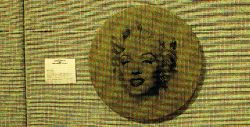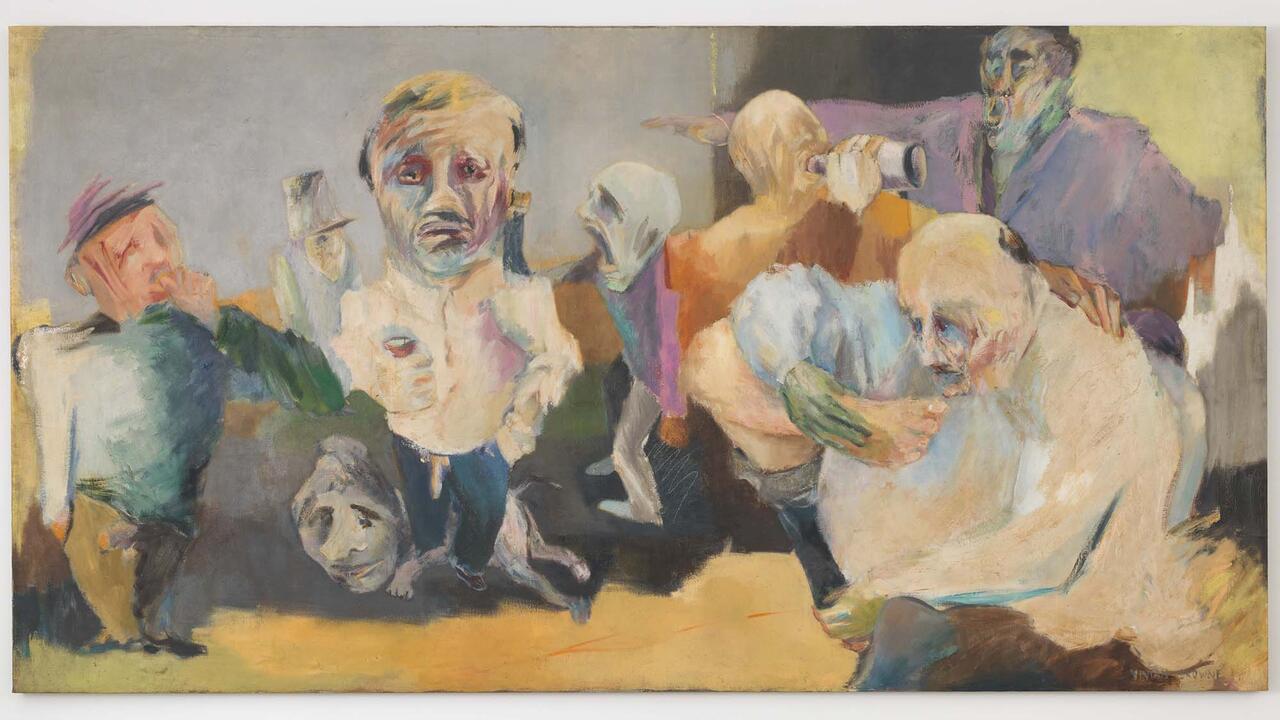Louise Lawler

Louise Lawler is conceptual photo-graphy's Jane Austen. For over 20 years her project has been the most intrepid and witty investigation of the consequences of what might be called the erotic private life of art, providing a pictorial interrogation of the institutional framing devices which don't merely inflect or effect, but infect or transform the artwork and its meaning. However, as Robert Storr has acutely noted about Lawler: 'A nimble provocateur, she... combines a patient determination to make anti-art with an irrepressible delectation of art for art's sake - portraying a comedy of contemporary manners.'
The ways in which Lawler arranges her pictures for an exhibition demonstrates how the act of looking includes both the thing observed and everything around it, extending beyond the visual, deranging not only what those pictures have been or meant, but what they will be and mean. For the sumptuous new volume An Arrangement of Pictures (2000), Lawler selected from, and newly re-arranged, a survey of her photographic work, which is reproduced with a vivid clarity and brightness. Johannes Meinhardt provided the introduction, but much more illuminating is a conversation - detailed without being intrusive - between theorist Douglas Crimp and the artist. Many of Lawler's insights, which hitherto have been somewhat obscured, can now be considered: how, while she has been interrogating the site of seeing, she has also been examining the seeing of sight. Interruption, cost, memory, transaction, pain, and distance - all come between the one seeing and the thing seen. Lawler's acknowledgement of this disturbance often results in a shine or reflection, an effect of light. This discombobulating shimmer of the shiny - what is immaterial - comes to effect the matter, value, and meaning of what is considered art. Look, for example, at How Many Pictures (1989), in which a Frank Stella is reflected in the gloss of a wooden floor. Where and what is the Stella, where is the art, the picture? Out of the frame? In the reflection? In the picture of the reflection? In memory? In the Stella's materiality or elsewhere?
Often the composition of Lawler's pictures highlights how art seems to view its viewers or, (perhaps even more strangely), shows the object of contemplation itself turning away. Even when facing art, someone may not, or may not care to, see it, as in Hand on Her Back (1997/98) and Arranged by Donald Marron, Susan Brundage, Cheryl Bishop at Paine Webber, Inc. (1982). In Living Room Corner, Arranged by Mr. & Mrs. Burton Tremaine, New York City (1984), a Robert Delaunay hangs above a television and a Lichtenstein bust, which has been turned into a lamp, seems to stare up and outward. The image on TV is blurred, distorted, snowy. Another version of this picture, not included in the book, is even more blunt: instead of snow, Stevie Wonder appears on the screen, peering outward. Consider in our looking all we remain blind to.
Much has been made of the critical nature of Lawler's project, and there is a rigour to her work which is breathtaking, especially given the flimsy conceptual apparatus of so much contemporary photography (a seemingly endless pimping of teenagers). But much of Lawler's importance comes from her unerring wit: the squib on the top of a tureen 'rhyming' with a splatter in a Pollock hanging above it; the supreme delirium of a Johns white flag, a 'signature' painting, hanging above a bed with a monogrammed quilt. Her work's destabilising, unquantifiable eroticism (the provocative nipple of a statue), and her pictures' - (to employ one of her favourite words) - poignancy. Perhaps most profoundly, this poignancy is most clearly seen in two identical photographs (one reproduced in the book, the other noted in a citation) of a gold Marilyn, which looks - despite the fact that it is an inanimate object - lonely. Titled Does Andy Warhol Make You Cry? (1988), its invisible, identical twin is Does Marilyn Monroe Make You Cry? (1988). A shrewd examination of the medium of photography and of Warhol's abandonment of the fetishised original to celebrate the repetition of the picture, the works' haunted doubling, as much as the possibility of its immateriality (picture reduced to citation), are quietly and subtly Lawler's point - and point to her necessity.
















